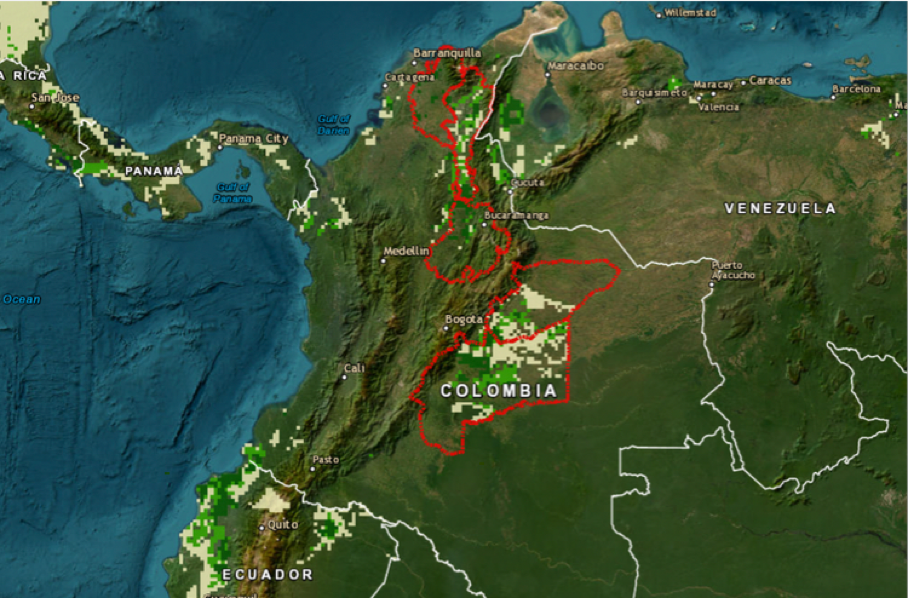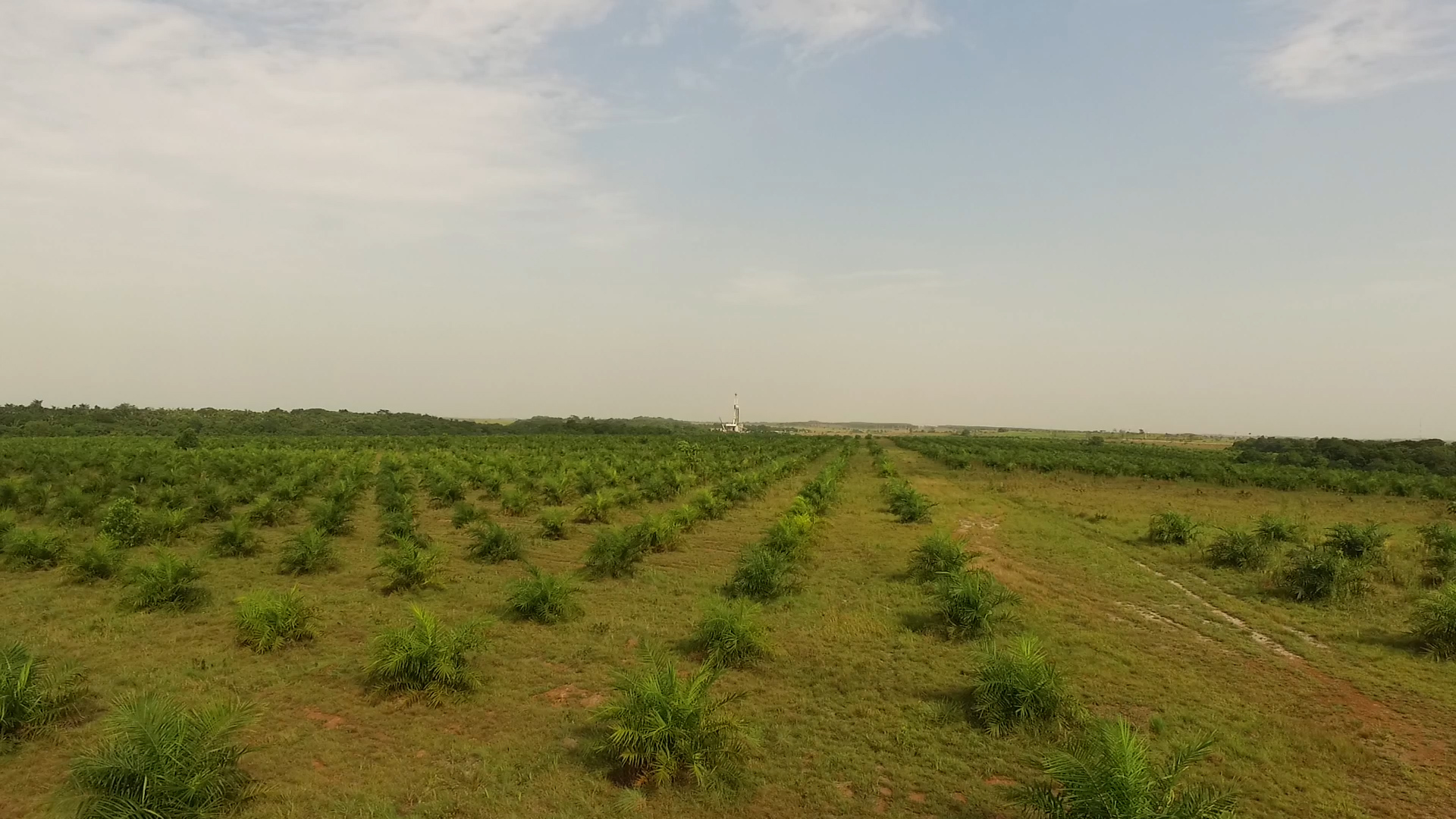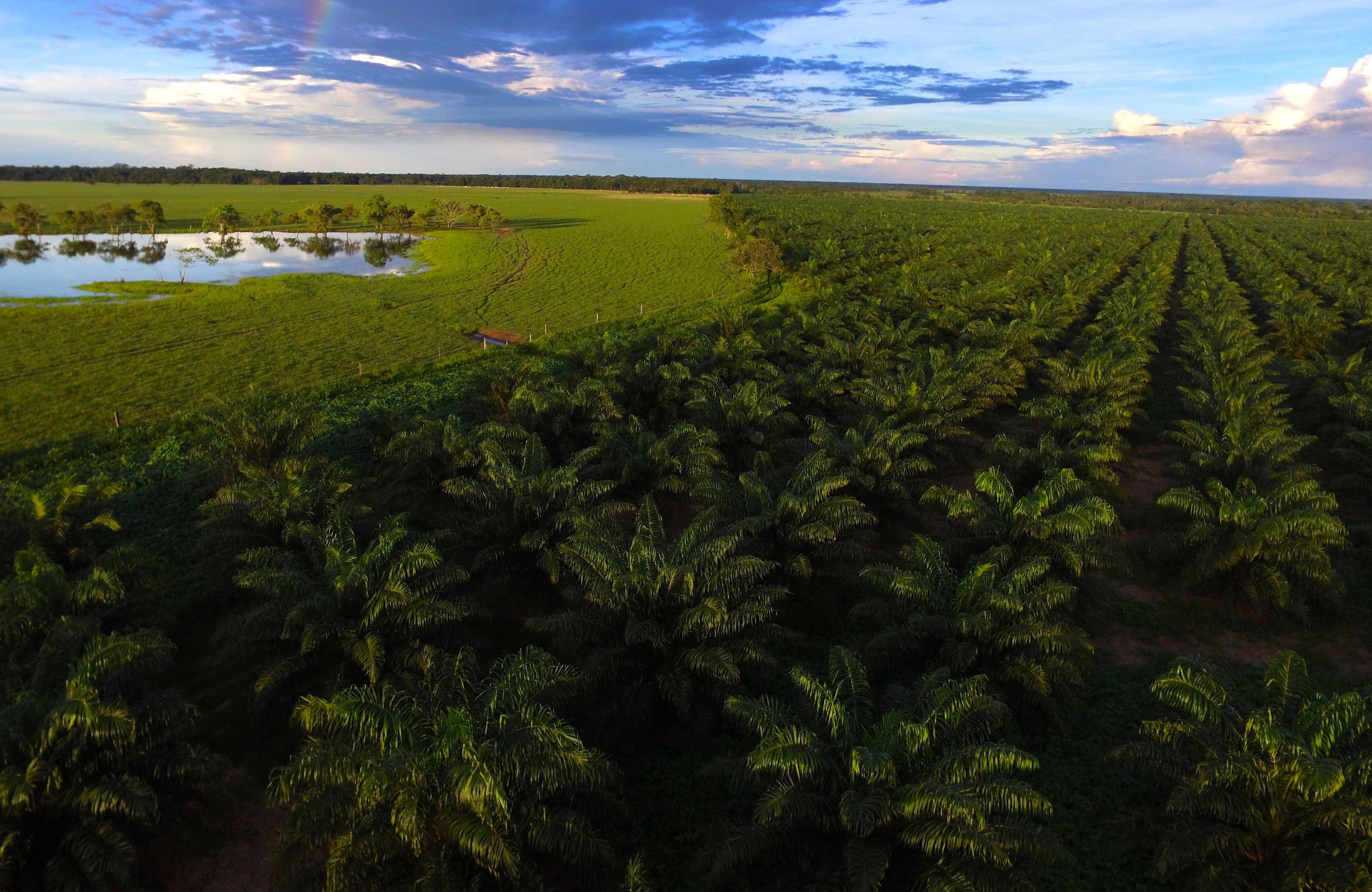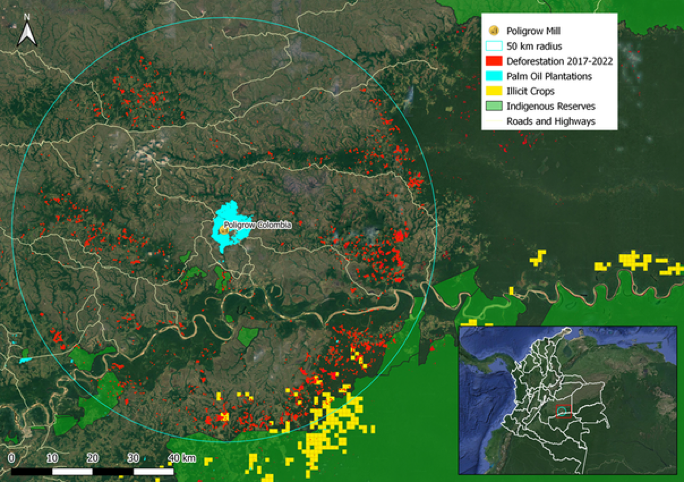- An investigation by the International Union for Conservation of Nature (IUCN) Netherlands and AidEnvironment analyzed six case studies relating to companies accused of deforestation and causing socio-environmental disputes.
- Colombia is the fourth- largest palm producer in the world after Indonesia, Malaysia and Thailand. Experts say there is a lack of progress in Colombia’s palm oil supply chain traceability.
- A new European Parliament law requires companies to issue certifications that exported goods do not come from deforested land, primary forests or areas of forest degradation.
On April 19, the European Parliament approved a law aimed at curbing deforestation. This legislation bans imports of coffee, cocoa, beef, soybeans, palm oil (and a series of its derivatives), timber, rubber, charcoal and printed paper that can be linked to, or that have been obtained from, deforestation.
According to a European Parliament press release, in order to comply with the law, companies will be able to sell such products to the European Union only after issuing a declaration certifying that the goods do not come from deforested land, irreplaceable primary forests or from areas where forest degradation occurred after Dec. 31, 2020.

Given these changes in international legislation and along with Colombia’s position as the fourth-largest palm oil producer in the world (after Indonesia, Malaysia and Thailand), the International Union for Conservation of Nature (IUCN) Netherlands and AidEnvironment conducted an investigation into Colombia’s palm oil supply chain. The investigation looked at six case studies of companies producing and marketing Colombian palm oil.
The study, “Uncovering the supply chain: palm oil from Colombia to the EU,” shows how this supply chain works, starting with cultivation sites in Colombian fields through to consumption in European countries. The research also warns of the risks and the direct and indirect threats of deforestation in areas where companies cultivating and processing palm oil are located. According to the research, 23,311 hectares (57,602 acres) were burned between 2021 and 2022 in areas near where the six companies operate, and deforestation in areas surrounding the companies’ facilities reached 3,807 ha (9,407 acres) between 2011 and 2022.
“Firstly, we wanted to give an overview of trade flows between Colombia and the European Union and basically map all the stakeholders in this process. Secondly, we also wanted to take a closer look at what is happening on the ground,” explains Sander van Andel, senior expert in nature conservation for IUCN Netherlands and co-author of the research. “We carried out this study because palm oil is one of the crops linked to certain land use changes, as well as some irregularities and illegalities, but we didn’t have the full picture.”
Mapping oil palm
Colombia accounts for 2.3% of world oil palm production, a figure equivalent to at least 1.838 million tons of palm oil per year, according to the study. Most palm oil is grown in the department of Meta, followed by Santander, Cesar, Magdalena, Casanare and Bolívar.

The research shows that, of this production, 52% is destined for the domestic market and 48% for international exports. According to the 2020 data cited in the report, most foreign sales go to the European market and to other Latin American countries, mainly Brazil and Mexico.
The study identified and examined the stakeholders involved in the palm oil supply chain from Colombia to the European Union. These results were then combined with real-time monitoring of oil palm plantations with high levels of deforestation and other social and environmental threats in the regions with the highest production of the crop.
Six case studies of companies linked to 11 palm oil mills were identified. The companies featured in the research are Poligrow Colombia, Agropecuaria Santamaria, Agropecuaria La Rivera Gaitán, Riopaila Castilla, Daabon Group and Oleoflores.
The first three are located in the southern part of the Meta department, while Riopaila Castilla is in the department of Vichada. Daabon Group is in Santa Marta, and Oleoflores Group has offices in the departments of North Santander, Bolívar and Cesar.

“We wanted to investigate what level of deforestation can be found in the palm oil supply chain. An important point is that deforestation and burning have not stopped since 2020 — the deadline set by the EU regulation for allowing the purchase of oil from deforested land — but forest loss since that date has not been large-scale. In addition, thousands of hectares are used for the production of palm oil for biodiesel,” van Andel says.
Van Andel is also keen to highlight the disputes linked to palm cultivation and processing sites. Many of them are historical, dating back 10 or 20 years, but they occurred in areas where oil is now produced. Another important issue is that many cultivation sites and their associated processing mills are very close to where deforestation frontiers end, bordering areas with forest cover. “There is some connection between deforestation and palm oil,” van Andel adds.
For Sarah Drost, researcher at AidEnvironment and co-author of the study, other aspects of the research findings are also pertinent, such as land conversion processes affecting water sources and causing social problems. “I think there are gaps in the European Union regulation, because it does not include these two considerations.”

The results of the study also suggest that the surface area used for oil palm cultivation has increased considerably in the last 10 years. According to a report by the National Federation of Oil Palm Growers (Fedepalma), in 2011 the net area planted with oil palm in Colombia amounted to 391,187 ha (966,644 acres), but by 2022 it was almost 600,000 ha (1.48 million acres).
“We still do not have sufficient policies and standards in place for palm traceability,” say researchers from the Foundation for Conservation and Sustainable Development (FCDS) about the threats posed by this lack of traceability from origin to commercialization.
Although the European Union law requires the purchase of certified palm from areas without deforestation, there is no national legislation to ensure its origin. “We must remain vigilant, not only in the international market, but primarily in the domestic market, because the largest percentage of palm remains in-country,” says the FCDS.
Another issue to consider, according to the FCDS, is that of crops originating from informal and even illegal sources. The NGO is concerned that crops planted in 2018 in San José del Guaviare, in the Second-Law Forest Reserve of the Colombian Amazon, were not done by companies signed up to Fedepalma and are considered informal plantations. “We are very concerned because fruit coming out of plantations in San José del Guaviare could be headed for processing plants belonging to the companies analyzed in the study.”

The FCDS adds that Colombian palm is recognized as sustainable palm, but when it comes to regions with little institutional presence, there is a high possibility that palm fruit from informal or illegal sources is reaching extraction plants that are classified as sustainable. “For this reason, we are advising extraction plants to implement much stronger traceability mechanisms.”
According to the “Colombia 2020 Palm Oil Barometer,” prepared by Solidaridad, an international organization dedicated to developing inclusive and sustainable value chains, 28% of the country’s palm production is sustainable. Although the figure is low, it is higher than that achieved by the world’s leading producers — Indonesia with 19% and Malaysia with 23%.
Environmental risks: the six case studies
The six companies were selected for the research based on the possible presence of deforestation, fires and other forms of native vegetation conversion in the area where the companies are located. They also took into account their proximity to Colombia’s existing deforestation frontier, to Indigenous territories, to protected natural areas and to areas where illicit crops have been planted.

Other criteria included the companies’ connection to the pollution of nearby rivers and whether any allegations of controversial land deals or complaints had been made to the Roundtable on Sustainable Palm Oil (RSPO), among other socio-environmental problems. In addition, the examples featured in the study “show that the palm oil flows entering the EU market are linked to palm oil mills situated near areas with clear indications of savanna burning, environmental damage to watersheds, and displacement of Indigenous groups or peasants through forced or unfair actions,” the publication explains.
The FCDS has been closely monitoring activities relating to Poligrow Colombia, Agropecuaria Santamaria and Agropecuaria La Rivera Gaitán, located between the Orinoco-Amazon transition zone, in the Meta department. “We have been carrying out constant monitoring together with Fedepalma because this area has a strategic ecological value for the country. We share concerns that non-member growers are moving forward with plantations in ecologically important areas of the Amazon and we are working together to warn of these pressures.”
The FCDS points out that although the main drivers of deforestation in the Amazon are land-grabbing and economic consolidation through extensive cattle ranching, it is also important to consider palm oil as a factor. “We want to draw attention to the importance of setting strict limits on productive activity in the Amazon. We need to encourage the productive management of the territory,” say the researchers, going on to state that the condition of ecosystems such as the morichal forests is a cause for concern.
Drost, from AidEnvironment, is most concerned about Poligrow Colombia because it is certified by the RSPO. Having this certification is a guarantee of a product’s environmental and social sustainability. However, Drost says the company has a history of socio-environmental conflicts.

According to the study, Poligrow Colombia, which is located in the municipality of Mapiripán in Meta, has a complicated and opaque corporate group structure. The study notes that, since beginning oil palm planting in 2010, activities in and around its estate have been linked to social and environmental complaints ranging from forced displacement of Indigenous communities to environmental degradation and pollution.
There is also an ongoing RSPO investigation into its subsidiary Poligrow Italia relating to a complaint alleging that its palm growing land “was obtained through intimidation and without due consent from Indigenous landowners.” According to recent RSPO minutes, dated in March, a response to the case is pending the RSPO certification unit’s audit of the company.
The report also claims that Poligrow’s processing plant is located very close to where the deforestation frontier ends and the forest begins, as well as to Indigenous territories and illicit crop production areas.
“Although we cannot confidently say that palm oil extraction mills are linked to advancing deforestation, it could be said that, in the near future, oil palm sites will most likely expand into areas that are currently being deforested,” says Drost.

Agropecuaria Santamaria also features among the report’s case studies because its oil production plant, Aceites Cimarrones, processes crops for three companies that export to Europe. The report notes that Agropecuaria Santamaria is a member of the RSPO, and has therefore committed to no burning, deforestation or loss of High Conservation Values. However, research shows that between 2011 and 2021, 1,466 ha (3,622 acres) of deforestation were recorded and, in the last year, 247 ha (610 acres) of land have been burned very close to its palm oil production site.
Agropecuaria Santamaria’s palm processing mill is also located in Meta, near the deforestation frontier and areas of illegal crop production.
Next on the list of companies is Agropecuaria Rivera Gaitán, also found in the Meta department. Its founder, Reinel Gaitán Tangarife, was arrested in February 2022, accused of allegedly being the largest deforester in Colombia and linked to environmental crimes such as illegal mining, bribery and fraud. According to the study, Agropecuaria Rivera Gaitán focuses on the cultivation, extraction, production and commercialization of oils, fats and palm oil derivatives.
A further three companies with palm processing plants were looked at as part of the report. Riopaila Castilla, a company located in the department of Vichada, is made up of 29 other companies and uses 50,000 ha (123,522 acres) of leased land for its crops, but, the report says, it has been accused of having created artificial companies in order to buy the land it leases. In addition, some 16,200 ha (40,000 acres) of land were burned around its processing mill between 2021 and 2022.

Finally, there are the Daabon Group, based in Santa Marta (Colombian Caribbean), and Grupo Oleoflores, which has offices in Bolívar, Cesar, La Guajira and North Santander. The report claims that the Daabon Group, one of the five main suppliers of palm oil to Colombia, Europe and other Latin American countries, is under investigation by the RSPO for inadequate working conditions.
When asked for comment, the Daabon Group reported, “the complaint was withdrawn by the same union body in January 2023.” Regarding the burned areas and deforestation that occurred near the company’s facilities, the Daabon Group also stated that it does not know how these incidents came about and that “we have no intention of expanding into areas that have been burned or deforested.” The RSPO complaints panel also says the process was closed when the allegation was withdrawn.
The study goes on to claim that there is a conflict of interest affecting the Oleoflores Group because the company is owned by Carlos Roberto Murgas Guerrero, former agriculture minister. Murgas Guerrero was “one of the investors in the political campaign for the presidency of Álvaro Uribe Vélez in 2002. The company was also part of generous government subsidy schemes and tax exemptions that have been linked with corruption associated with the payment of political favors to legal and illegal actors,” the report states. In addition, the company has an ongoing dispute with rural residents over land in the department of Bolívar.
Mongabay Latam contacted all six companies to ask their opinion on the study’s findings. Daabon Group responded, while Poligrow and Riopaila Castilla said they would respond but had not sent their responses by the time of publication. Agropecuaria Rivera Gaitán, Agropecuaria Santamaria and Oleoflores did not reply.

According to the report, the six case studies show that palm oil flows entering the EU market are linked to palm oil mills near areas with clear signs of savanna burning, environmental damage to watersheds and displacement of Indigenous groups or rural residents through forced or unfair land deals exist.
Carlos Devia, a professor at the faculty of socio-environmental and rural studies at Javeriana University, says the savannas are one of the ecosystems that most concern him in relation to oil palm production because oil palms are being planted in savannas in the eastern plains. “Areas that used to have natural savanna pastures are being converted into palm plantations overnight. People are saying there is no deforestation, but the savanna ecosystem is being replaced.”
Devia explains that planting palm in this ecosystem has “a powerful impact” because, being located in areas without sufficient rainfall, an irrigation system has to be installed using nearby rivers. Then, during the rainy season, a large amount of rainfall floods the savannas and runs into the rivers. However, when savanna pastures are replaced by oil palm, most of the rain does not reach the waterways because it stays in the palm crops. “This affects the dynamics of river waters, which in turn affects the savannas that used to be flooded. This means that the condition of the savanna is shifting toward crop growing areas with high water demand, which in turn affects the area’s water demand.”
In this sense, Devia agrees that the European Union legislation could be effective in Colombia. “These measures involve civil society in a practical way with issues that are relevant, often leading to rumblings in the market.”

The report states that Colombia is the sixth-largest supplier of crude palm oil to the European Union, with more than 200 tons of crude palm oil exported to the continent in 2021. César Corredor, coordinator of Tropical Forest Alliance Colombia, points out that although some palm growers have opted for zero deforestation and are producing sustainable palm, the new European Union regulation “will force new palm growers to adopt these practices.” In addition, as sustainable palm certification becomes more relevant in the domestic market, producers that engage in illegal practices will be left behind. “I think the way forward is to continue working on formalization and ensure that the entire sector can meet those standards,” he adds.
However, Corredor also says he believes that important steps need to be taken so the country has sufficiently robust reporting mechanisms in place, not only relating to production, but also to illegal and informal activities that cause deforestation. “Regulation should not only apply to the production side, but also in a way that leads to importing countries, together with the European Union and other important markets, looking at the issues around deforestation in a much deeper way. I believe that regulation will be very effective and will play an important role in reducing this phenomenon.”
Corredor says he believes that such a comprehensive monitoring system is needed at the farm level to help record precise information on where deforestation is occurring, alongside a product traceability system.
Banner image: Oil palm cultivation field in Colombia. Image courtesy of Alvaro Avendaño.
This story was first reported by Mongabay’s Latam team and published here on our Latam site on May 11, 2023.
